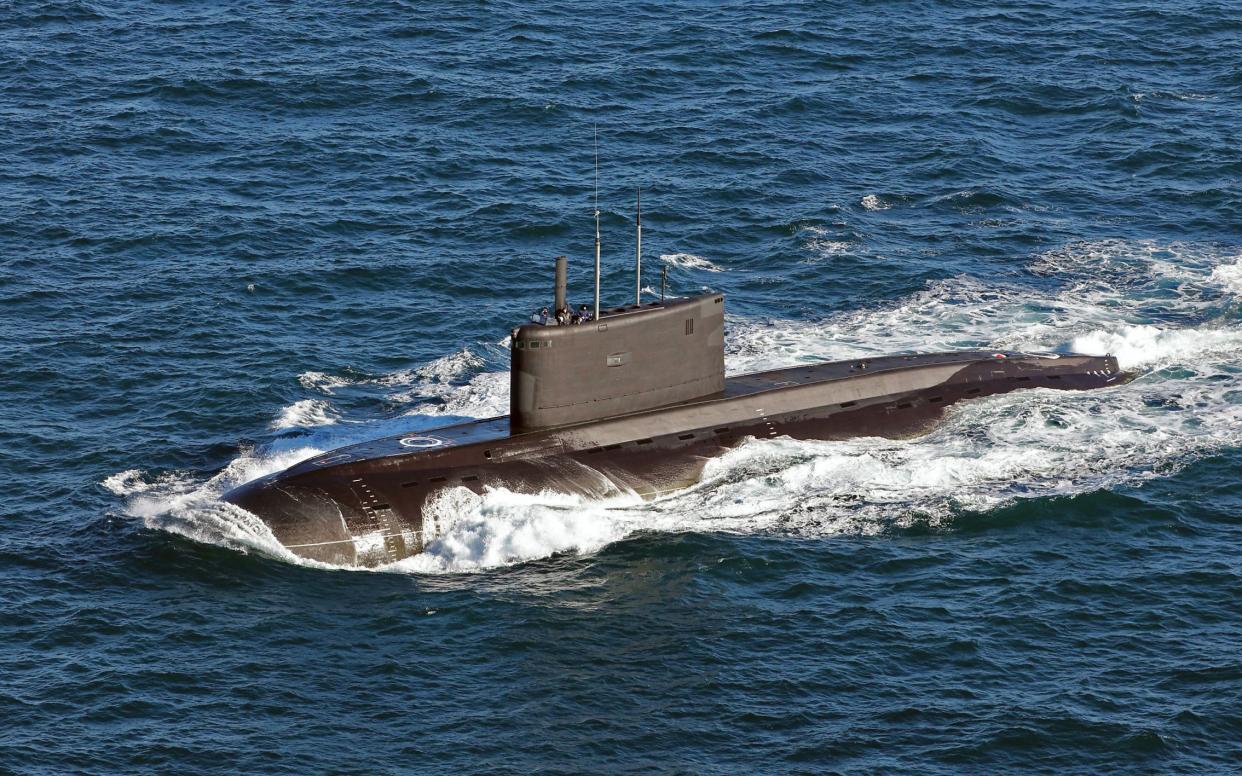Putin has one deadly weapon left, and I saw first hand the threat it poses

- Oops!Something went wrong.Please try again later.
The First Sea Lord said this week that, in 500 years, there may no longer be ships at sea. This could well be true; but for the next few decades, at least, Britain’s security depends on the Royal Navy.
Russian submarines have been active in the North Atlantic for as long as Moscow has had them. Between those carrying Putin’s ballistic missiles, and those sniffing around our undersea infrastructure, they pose the single greatest threat to Britain today.
The nuclear threat is unimaginable, but sabotage could also be catastrophic. Some 95 per cent of all international data travels through fibre-optic cables on the seafloor, along with critical oil, gas and electricity connections powering our economy. It’s a target-rich environment for Russia’s submarines, which prowl the seas mapping potential action.
In 2012, I captained a frigate tasked with disrupting this activity. The ship was at immediate notice to sail with stores, equipment and crew all maintained at 100 per cent, waiting for the call – or the order to report in person for information too sensitive to be sent electronically.
Intelligence assets, satellites, underwater sensors, fixed wing aircraft, frigates, helicopters and the West’s own submarines formed an intricate web across millions of square miles of ocean. We were given a simple task: fit into this web, and then detect, deter and, if necessary, disrupt Putin’s submarines, keeping them away from critical cables and our own nuclear deterrent.
This presented real challenges. Keeping the crew motivated and alert when we never knew the call would come was one. Disentangling the network of assets another; multiple intelligence sources always require some decoding, but when they are highly classified and protected by the owner, it’s particularly challenging.
The sea itself presented another difficulty. Working in the Greenland-Iceland-UK gap, dangling large bits of array out of your ship and flying a 13-ton helicopter off a small flight deck is not for the faint-hearted. Both have a sea state above which they won’t operate effectively, and then often a state where they can’t operate at all. My memory is of operating in this contested zone for weeks at a time, with operational success and – ultimately – lives at stake. I’m sure the sun must have come out sometimes, but I don’t remember it.
But perhaps most challenging was the skill of the Russian submariners. Years of hard-earned experience and cutting-edge equipment made them a formidable adversary. Detecting them was nearly as difficult as detecting the best the UK and the US had to offer. But detect them we did, and the day you “go hot” on your first Russian sub is not quickly forgotten.
These missions are sometimes questioned. If we’re not shooting, why bother? But this line of questioning misses the point of what navies are for: influence. Most of the time, letting potential adversaries know you are on top of their actions and could act if you needed to is sufficient. We were sent to detect and deter; and on each occasion, when the Russians knew they were rumbled, they left. So disrupted, too.
Russia’s submarines are first rate, and are operated extremely well. The failings of the surface fleet shown by the sinking of the Moskva do not apply here. Our ability to contain their threat is more critical than ever before.
Tom Sharpe is former Royal Navy officer

